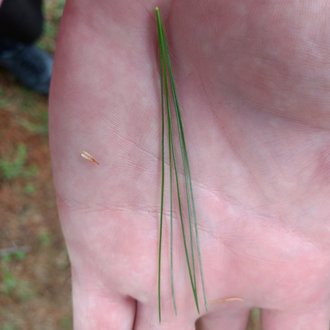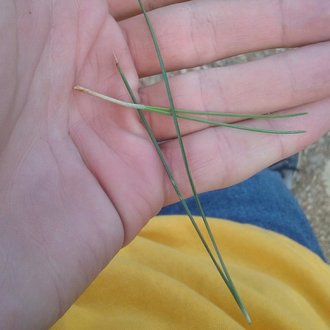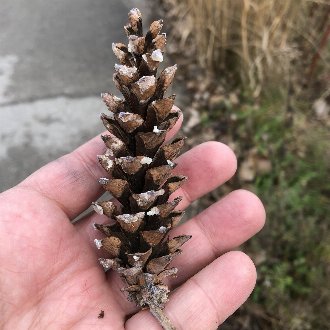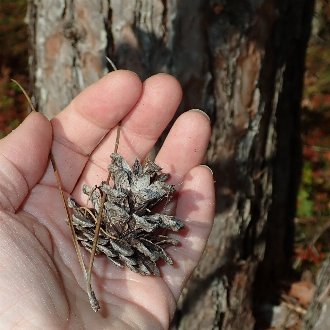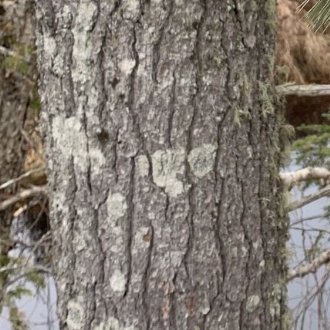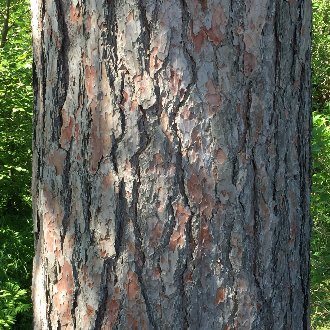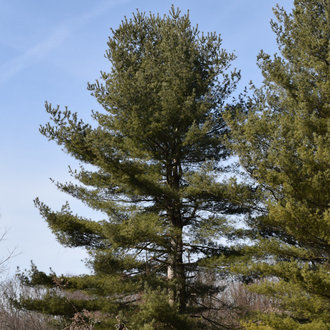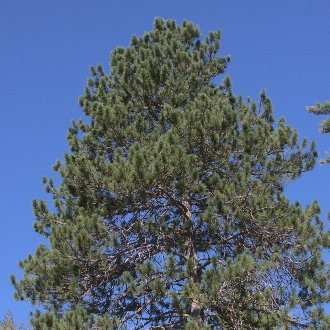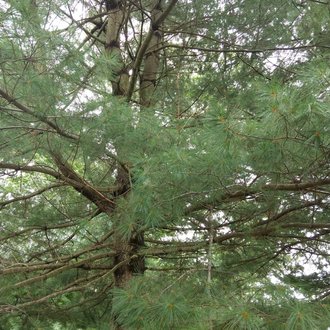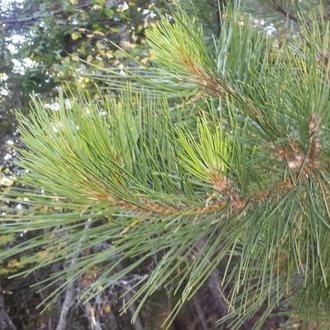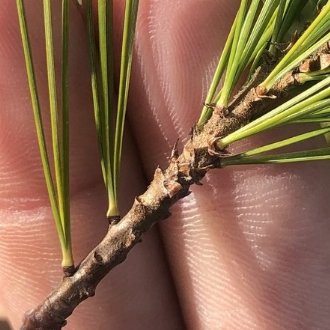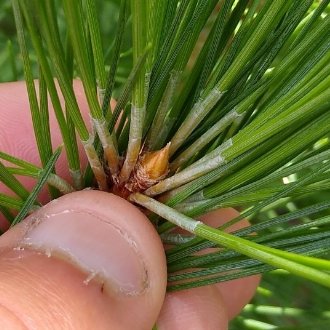Eastern White Pine vs Red Pine
Eastern white pine (Pinus strobus) and red pine (Pinus resinosa) are often confused where their ranges overlap. Both are large, long-lived, straight-growing trees with long needles, frequently seen towering over other trees in a forest. They are easily distinguished by needle count per bundle, cone length, and bark color. With experience, they can also be identified at a glance by crown shape and foliage color and texture. Although both species are grown in plantations, red pine is rarely grown in landscaping. Although their habitats overlap and both frequently grow near lakes, white pine is found in richer, more humid habitats, and can be found farther south, whereas red pine is restricted to a more northerly range and sites with poorer, usually sandy soil.
Eastern White Pine (Pinus strobus) | Red Pine (Pinus resinosa) |
A common native pine of the northeast, Eastern White Pine is the tallest tree in the east, and more shade-tolerant than most pines. | A pine native to northern areas in eastern North America, mostly found on dry, sandy soils, often near lakes; typically requires fire to establish. |
Needles in bundles of 5. Needles are flexible and do not break as easily if bent. Needles average shorter. Photo © Mark Apgar, CC BY 4.0. | Needles in bundles of 2. Needles are brittle and snap easily when bent. Needles average longer. Photo © Alexander Peichel, Public Domain. |
Much longer cones. Photo © Andrew Sebastian, CC BY 4.0. | Much shorter cones. Photo © Lynn Harper, Public Domain. |
Although younger branches may show some dark reddish-bronze color, bark of the trunk of mature trees is gray. Photo © Charlie Hohn, CC BY 4.0. | Bark of mature trees, even low down on the tree, is consistently reddish, the reddish color typically showing in splotches as outer layer of bark flakes off. Bark color relatively consistent from bottom to top of tree. Photo © askalotl, Public Domain. |
Crown of healthy, mature trees is more irregular and commonly has "spikey" appearance. Finer-textured foliage leads individual clumps of needles to be less visible at a distance. Photo © , CC BY-SA 4.0. | Crown of healthy, mature trees is rounder and more regular on average. Individual clumps of needles more clearly visible at a distance. Photo © Nick Kleinschmidt, CC BY 4.0. |
Foliage more bluish. Photo © Mark Apgar, CC BY 4.0. | Foliage sometimes more yellowish, never bluish. Photo © Laura Gaudette, CC BY 4.0. |
Sheath at the base of each clump of needles is usually shed quickly. Photo © Brad Von Blon, CC BY 4.0. | Sheath at the base of each clump of needles persists longer. Photo © Alex, Public Domain. |
References & External Resources
These short lists show only links helpful for ID. For a complete list of references and resources also covering other aspects of ecology, visit the links section of the full article on each plant, which is the first entry here.



